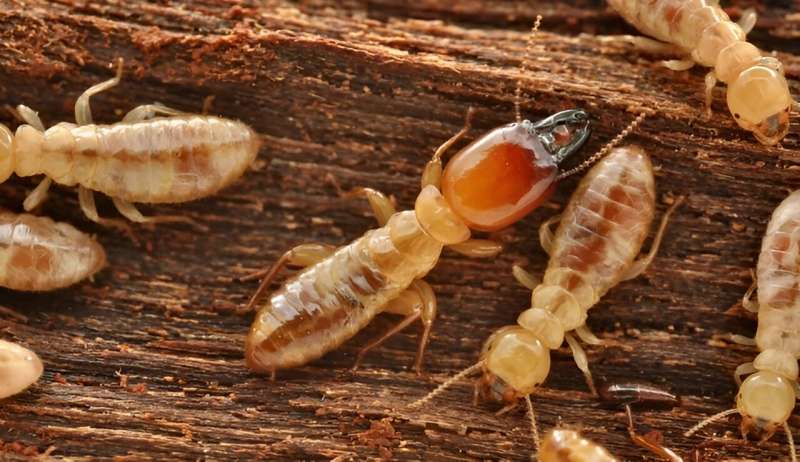This article has been reviewed according to Science X's editorial process and policies. Editors have highlighted the following attributes while ensuring the content's credibility:
fact-checked
peer-reviewed publication
trusted source
proofread
Genetic analyses show how symbiotic bacteria in termite gut has changed over course of evolution

Researchers at the Max Planck Institute for Terrestrial Microbiology in Marburg, Germany, have analyzed the evolutionary development of symbiotic bacteria in the intestines of termites with regard to their metabolic capabilities.
The results, now published in mBio, show that some strains of bacteria may in fact have already started on the path from being beneficial to becoming parasites.
Not only humans or ruminating cattle have myriads of microbes living in their intestines. The intestines of many termite species, which feed on the decomposition of hard-to-digest wood components, are packed with numerous unicellular helpers, so-called flagellates. These in turn are colonized by bacteria. The bacterial endosymbionts live in or on the eukaryotic flagellates and supply them with nutrients in the termite gut.
A team led by Marburg Max Planck scientist Andreas Brune wants to gain a better understanding of the details of the cohabitation and, above all, the globally important metabolic performance of the bacteria. This is because the contribution of termite microbes to the global methane balance is not insignificant. Furthermore, the ability of the microbial symbionts to convert wood components into potentially valuable building blocks has also attracted the interest of researchers for years.
Endomicrobia: A excellent case for evolutionary studies
In their latest study, Andreas Brune's team investigated how the partnership between flagellates and bacteria came about and how the metabolic performance of the bacteria is correlated with this evolutionary development. This approach is normally limited by the fact that there are no longer any close relatives that live independently outside the host cells. In this case, the researchers were fortunate: a group of bacteria called Endomicrobia contains both free-living forms and endosymbionts of the flagellates.
The researchers analyzed the genetic information of bacterial strains associated with different termites using metagenome sequencing. "When we looked at the results, we realized that the Endomicrobia bacteria inhabiting the flagellates had lost many genes over time," explains Undine Mies, a Ph.D. student in the group. However, this loss was compensated for by the acquisition of new functions through the transfer of genes from other intestinal bacteria.
Horizontal gene transfer provides new metabolic capabilities
"By receiving genes from other bacteria in their environment, the bacteria were better able to switch their metabolism to utilize other energy supplies such as sugar phosphates," says Mies. "This result emphasizes how important this horizontal gene transfer is for the co-evolution of organisms."
The data also show how, in the course of this evolution, there was a shift in energy metabolism from glucose to sugar phosphates and eventually a complete loss of the ability to break down sugar.
Instead, the bacteria acquired a transport mechanism for the uptake of energy-rich compounds (ATP/ADP antiporters) from the host environment, as is typical for parasitic bacteria. "The loss of almost all biosynthetic capabilities in some endomicrobial lineages and the acquisition of the transporter indicate that the originally mutually beneficial relationship between the bacteria and the gut-dwelling flagellates may be in decline," explains Brune.
"In a next step, we now want to investigate the extent to which the original tasks of the endomicrobial symbionts are being replaced by other, secondary symbionts. This will contribute to the general understanding of how nature avoids dead ends in the evolution of symbioses."
More information: Undine S. Mies et al, Genome reduction and horizontal gene transfer in the evolution of Endomicrobia—rise and fall of an intracellular symbiosis with termite gut flagellates, mBio (2024). DOI: 10.1128/mbio.00826-24
Journal information: mBio
Provided by Max Planck Society





















